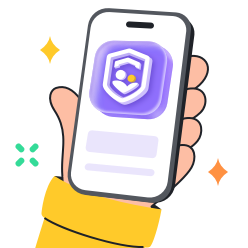The Internet is a vast source of knowledge and entertainment, but it can also become a territory where children can stumble upon adult content. Fortunately, with a list of restricted websites and several measures, it’s possible to establish a safe Internet environment for your child.
Therefore, this article will discuss the typical types of prohibited web pages and give advice on how to block these websites on your gadgets.
List of restricted websites you need to block for kids
The internet is a great tool for education and leisure, but parents should always be aware of what children watch and learn on the internet. It is generally safe for your children to browse the internet when you disable some websites.



Here’s a list of restricted websites by category to consider blocking and some reasons why.
Pornographic websites
Internet websites containing pornographic materials are very dangerous for children and their development.
Desensitization to sexual material may cause individuals to become accustomed to unhealthy practices and become predisposed to developing an addiction.
Also, most of these sites portray gender stereotyping, objectification, and even rape or battering, which could be considered destructive.
A list of pornographic websites should be restricted:
- 8Tube.com
- YouJizz.com
- Xvideos.com
- YouPorn
Anonymous chat websites
Anonymous chat sites are potential havens for sexual predators, cyber bullies, and exposure to material that may be immoral or dangerous.
These platforms provide the user’s anonymity, making it easy for any individual with ill motives to harm children without being apprehended.
Children may also expose themselves to risky online behaviors, compromising their safety and privacy.
Examples of anonymous chat websites parents must be aware of:
- AdultChat
- TalkWithStranger.com
- ChatRoulette.com
- Chatzy.com
- Chatib.us
Adult dating websites
Adult dating sites are categorized as web platforms for people who are interested in sexual or romantic partnerships.
Such sites can lead to children being exposed to materials that might be obscene and that encourage vulgar posturing and a relaxed attitude toward sex.
In addition, such sites may provide platforms to interact with potential culprits or persons with ill intent toward the minor.
Examples of adult dating websites to block:
Gambling websites
The use of gambling websites may cause teens to develop bad habits of gambling and unhealthy spending habits.
Many of these platforms justify gambling as an entertaining and prestigious occupation without drawing attention to the undesirable features of excessive gambling.
Besides, some gambling Web sites may contain or provide information that is Not suitable for children or even lead to involvement in illicit businesses.
Check the gambling websites list to be restricted:
- PokerStars
- 888Casino
- BetOnline
- Bovada
- Slots.com
Inappropriate forums websites
Forums are websites that can contain violent content, prejudices, obscene words, and references to profanity and matters that are considered unsuitable for minors.
Such platforms rarely provide sufficient moderation measures, which means that the users who participate on these sites can post and consume potentially traumatizing or offensive content.
People might come across violent conversations, obscene content, or be introduced to radical views or groups that include hatred of other people.
Examples of inappropriate forums websites to block:
- 4chan
- Voat
- Kiwi Farms
- Discord
Smart Parents, Safer Kids: block inappropriate sites and apps easily with FlashGet Kids.
How to block inappropriate websites on kid’s phones?
Caring parents must ensure that their children’s access to information online does not harm them in any way. Since there is a lot of obscene material on the internet today, it is necessary to ensure that children are protected from viewing toxic pages.
Thankfully, there are several ways to prevent certain websites from being viewed on a child’s phone.
Method 1: Use parental control apps (Android&iPhone)
Parental control apps present a powerful tool to lock sites and monitor your child’s Internet usage. They go beyond basic website blocking and provide features like:
- App blocking: Limit the usage of some applications you consider useless, such as social apps or games.
- Screen time limits: Restrict phone or application usage using time schedules.
- Location tracking: To enhance safety, monitor your child’s location discreetly, with their permission.
- Web filtering: You can block entire web sections (say, gambling or social networking) or use custom block lists.
When it comes to the most efficient download solution on the market, FlashGet Kids appears to be the best option due to its ease of use and flexible keyword filtering tools.
It enables the development of distinct accounts for each child, providing highly specific control over what the children can do on the internet.
FlashGet Kids can also include logs that show the child’s browser activities. This will help the parents talk to the child about safe browsing, for instance.
Method 2: Built-in phone settings
All current mobile operating systems have integrated settings allowing parents to control their children’s screen time. Here’s a step-by-step guide to set them up:
iPhone: Content Restrictions
- Go to Settings. Then, click Screen Time (or General in previous iOS versions).
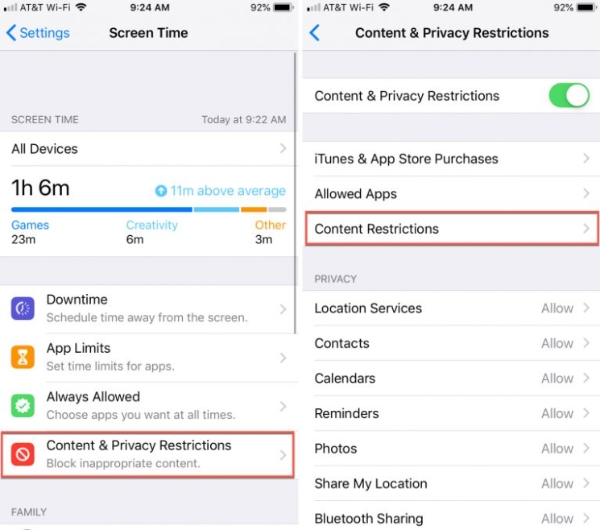


- Find and press Content & Privacy Restrictions > Web Content
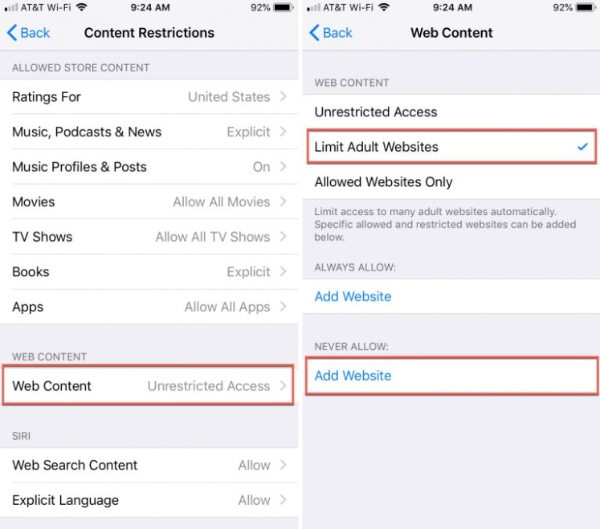


- Restrict websites by selecting “Limit Adult Websites.” Then, you can add the address of the harmful website from here.
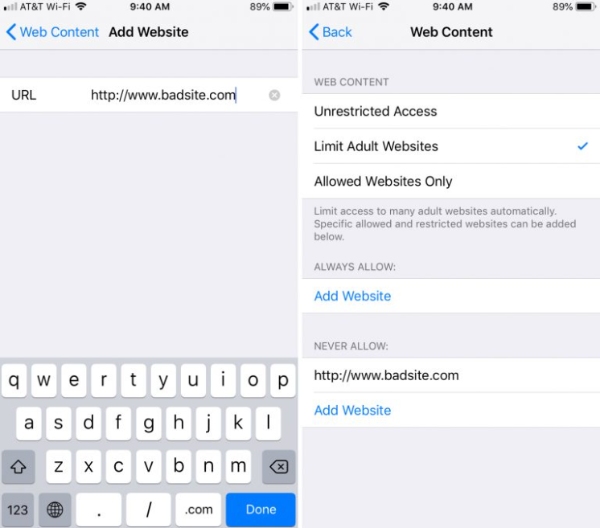


Android: Family Link
Parents should proceed to download and install the Google Family Link app on both their device and their child’s phone. Note that this service is available for children under 13 years old unless you fake your child’s age.
To set up a Family Link for your child, simply follow the steps presented to you on the screen.
- On your device, navigate to the Family Link application and choose your kid’s device.
- Click Manage.
- Choose See all apps & games.
- Scroll down to the website you want to block and tap the “Block” button.
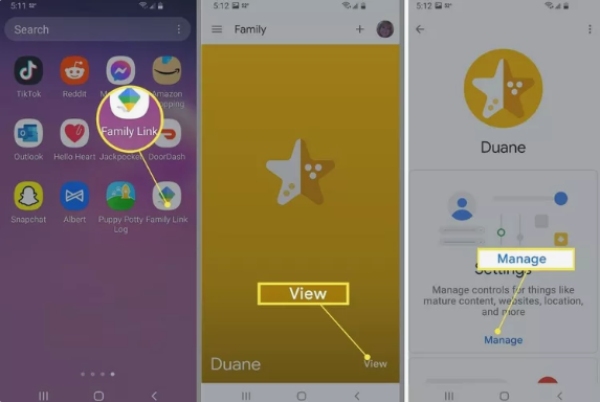


Method 3: Use a DNS filtering service
DNS filtering services operate by routing your child’s device to a safe server, preventing involvement in improper sites. It is important to note that this method applies to all gadgets connected to your home network, not only phones.
Here are some popular options:
- OpenDNS FamilyShield: A completely free web filter with basic setup options and limited content filtering capability.
- CleanBrowsing: It has a basic plan for website blocking at no extra cost and a paid plan for extra features.
Although DNS filtering is a good initial step, it can be less effective than parental control apps. It is also worth noting that some savvy teenagers might have a way around the DNS filtering mechanism.
How to block these websites on your kid’s computer?
The safety of your child, particularly in their use of the internet, is not just limited to their phones alone. Here are three methods to block inappropriate websites on their computer:
Method 1: Enable SafeSearch on the web browser
All popular web browsers, including Google Chrome, have an integrated component called SafeSearch. Although not entirely effective, it assists in blocking graphic content in search results.
Using Google Chrome as an example:
- Open Google Chrome.
- Locate the three vertical dots in the upper right corner and tap the Settings icon.
- Scroll down and choose the “Privacy & Safety” > “SafeSearch” option.
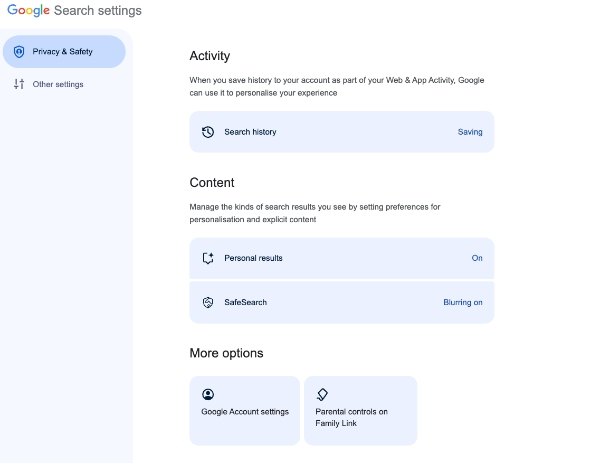


- In the SafeSearch filters, look for the filter level you want to set.
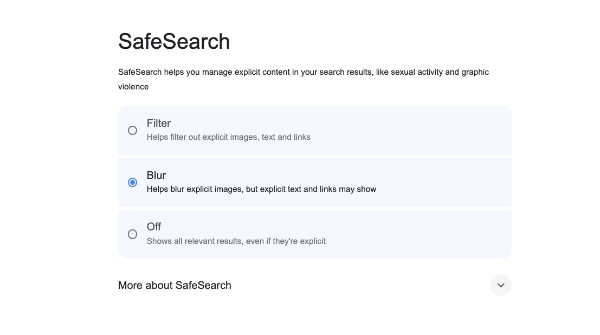


- Click on “Save”, which is located at the bottom of the page.
SafeSearch works mainly as a filter for search results and may not prevent actual access to the obscene websites that the user types in the address bar.
Method 2: Set up parental controls (Windows)
If you are a Windows 11 user, you can enjoy the feature that allows you to restrict your child’s access to some toxic websites. Here’s how to set it up:
- Go to Windows Settings > Accounts
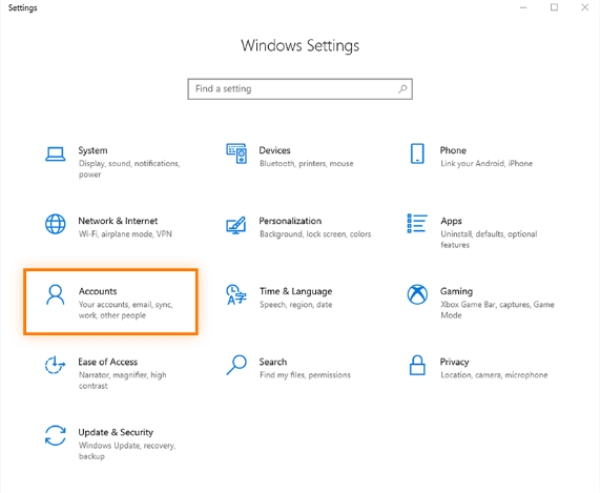


- Choose “Family and other users.”
- Then tap “Add a family member.”
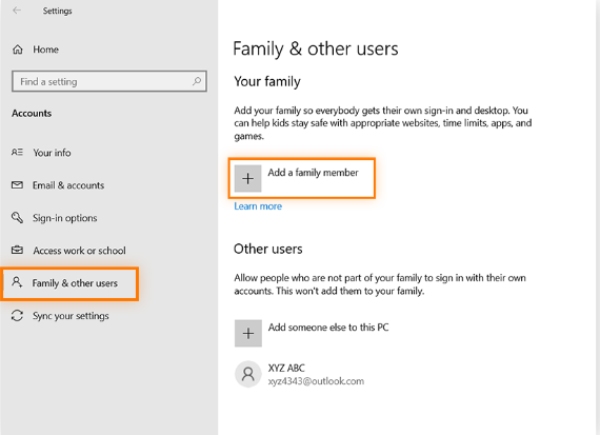


- Next, click I don’t have this person’s sign-in information and then Add a Child.
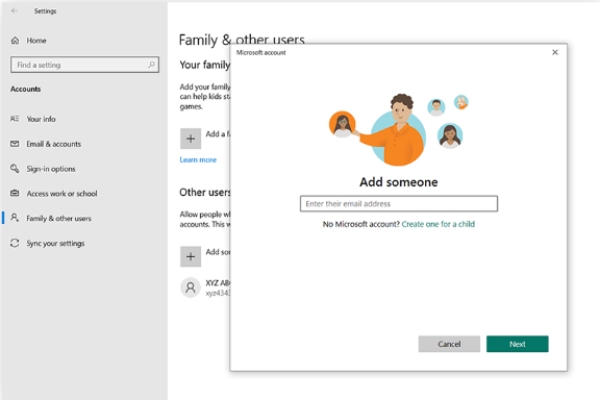


Once the child account is set up:
- Go back to “Family & other users.”
- Choose the account for your child, and go to the Account Settings section.
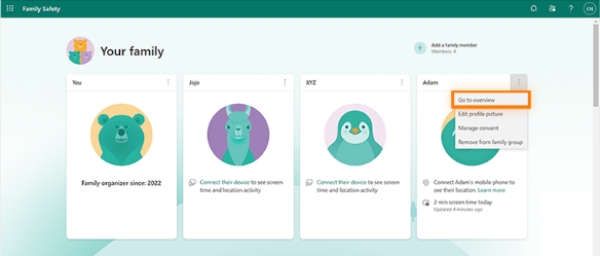


- Under Web browsing, enable blocking inappropriate websites.
- Enter the URL for the website you want to block.
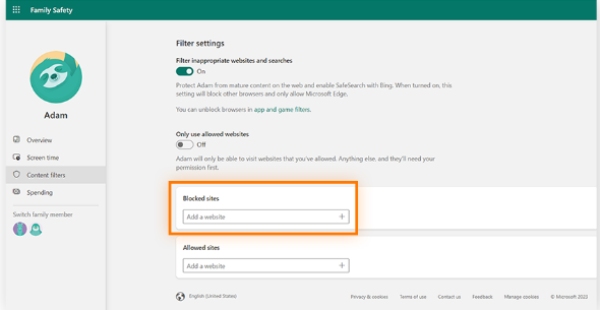


Method 3: Set up “Content Restrictions” (Mac)
There are also default Mac parental controls known as “Content Restrictions.” These can be set on the child’s Mac or another Mac in the Family Sharing group.
Setting up directly on your child’s Mac:
- Go to System Preferences.
- Click Screen Time.
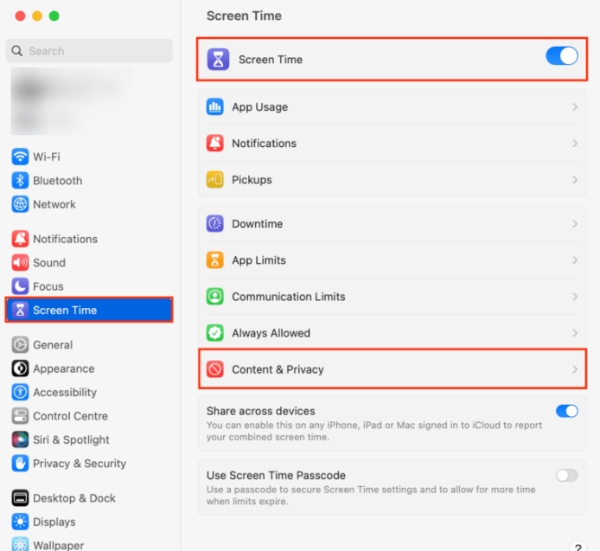


- In the bottom left corner, click the lock icon and switch to the option requiring an administrator password.
- To access it, click on the “Content & Privacy” section.
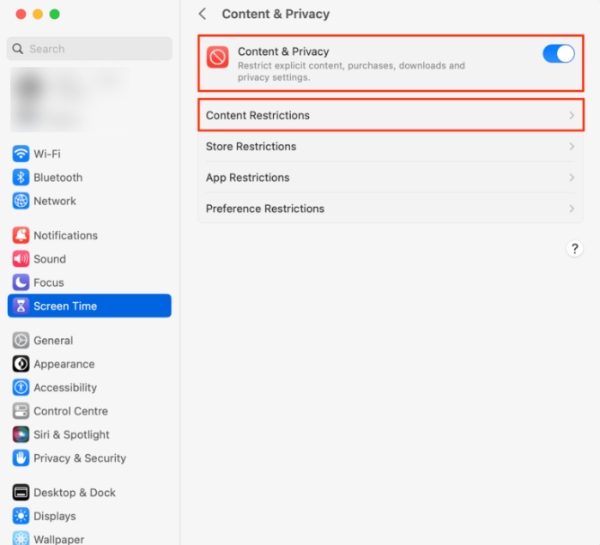


- Select which level of web content restriction you prefer (Limit Adult Websites, Allow All Websites, or Customize). This link will open in a new window.
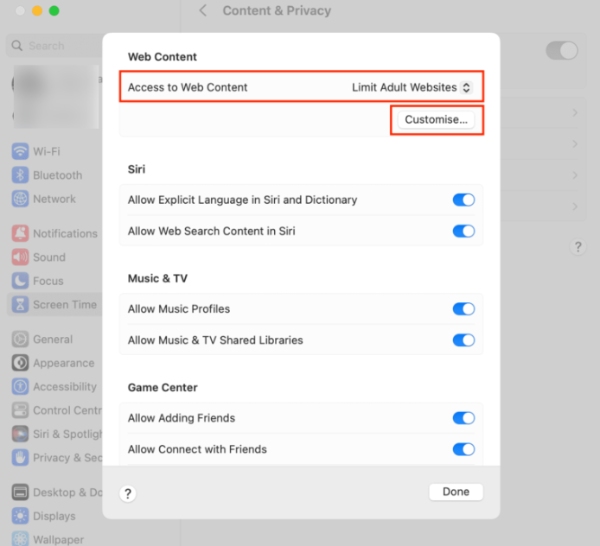


Setting up through Family Sharing:
- Check that you and your child are using Family Sharing on your Mac.
- From your Mac, go to the System preferences.
- Click Screen Time.
- In the bottom left corner, right-click the + button and choose Add Child.
- Under Add information about your Apple ID child, follow the on-screen steps to add your child’s Apple ID.
You can now configure your child’s Screen Time settings from your device and add websites to the restricted list mentioned above.
Tips for parents to ensure a safe online experience for kids
Creating a blocked websites list is a good start, but it is only one of the components that should be used to ensure the safety of children on the web.
Here are some additional practical tips to ensure a well-rounded online safety strategy:
- Open communication is key: Use communication and trust to teach your children basic rules of safety on the Internet. List the risks associated with the threat and the significance of appropriate internet conduct. Remind them they should never hesitate to contact you if they find something disturbing.
- Navigate together: Do not just give them a gadget and leave, try to engage them by discovering cyberspace together. Guide them to suitable websites and games for children to ensure they have good thinking abilities to sort the information they get from websites.
- Balance screen time: Set an appropriate number of hours for your children to spend in front of a screen. Try to motivate them to participate in other offline activities such as sports, hobbies, and relationships with friends and loved ones.
- Be a role model: Parents act as role models because children can learn from observing their parents. Closely regulate your own behavior and activity on the Internet. Limit computer use and show proper conduct on the internet, such as not posting personal information on social media platforms.
Together with the blocked websites list and other parental control options, these tips will help explain to children how they can safely navigate the vast territory of the World Wide Web.
Final words
Due to its explorable nature, the internet offers our children immense opportunities and risks in equal measure. As it promotes learning and interaction, it is important to ensure they do not expose themselves to harmful content.
Stay alert, supervise your child’s internet usage, and consider using an all-in-one parental control application such as FlashGet Kids. Through its improved capabilities and simplistic design, FlashGet Kids enables you to provide a positive and informative environment for children on the Internet.

